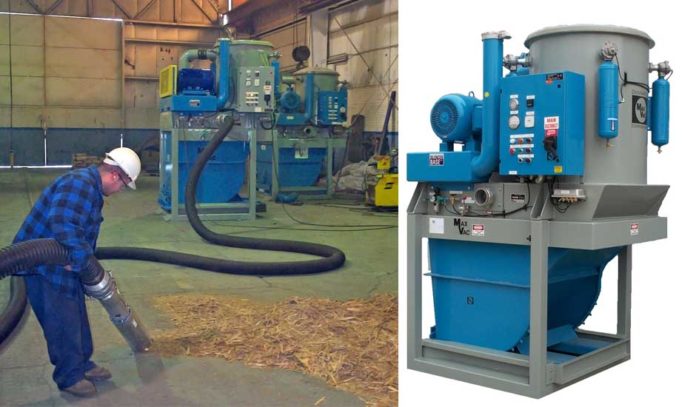Negosentro | What is a Central Vacuum System? | Industrial central vacuum systems are built into a building for simple use, access, and maintenance. Vacuum and pressure are created by a centrally located motor to get rid of dirt, dust, and debris. Based on the concept of the system and the material to be collected, they’ll be filtered or unfiltered with a set canister.
The inlets for a central vacuum system are connected by ductwork, piping, or tubing that’s installed along the walls of the building. The maintenance staff carries a hose of roughly 25 to 30 feet with a wand that activates the system. The electrical circuitry within the hose is activated by a put on the handle or wand.
All of the collected dirt and debris goes to the canister for garbage collection. During a filtered system, a filter or several filters clean the air from the collected debris. Hoses and attachments are standardized reducing the number of kit maintenance staff have got to carry.
The motor of a central vacuum system creates greater suction than is accessible from portable or handheld vacuum units. The suction on the system remains constant no matter the number of debris within the collection container.
Central Vacuum System Benefits
Central vacuum systems are more powerful with less noise than traditional cleaning methods. Since the unit is centrally located, collected dirt and mud are sealed within the system and kept from recirculating.
It includes the vacuum motor, canister housing, filtration unit within a filtered system, and an exhaust unit. The strength of the system depends on the dimensions of the motor and the way the varied elements are combined.
Below is a description of a number of those advantages.
- Protection of Walls and Furniture
- Suction Power
- Air Quality
- Filtration
- Noise
- Convenience
- Cost
- Tool Compatibility
- Emptying
- Durable
- Difficult Debris
Protection of Walls and Furniture:
A central vacuum system doesn’t require any kind of large equipment that might damage furniture or run into walls. The hose is flexible and inserted into the inlet. The handle or wand is held by the operator. Those are the sole parts of the system that are within the area to be cleaned.
Suction Power:
Central vacuum systems have larger powerful motors for greater cleaning power. Greater suction means higher quality cleaning to get rid of the tiniest dust particles. Some systems have two motors that supply more suction power
Air Quality:
The central vacuum system doesn’t discharge forced air or kindle allergens and mud particles. In fact, the Environmental Protection Agency estimates that the utilization of a central vacuum significantly reduces dust allergies. The spent air is removed into a utility space or sent outdoors through an exhaust outlet that’s just like a regular clothes dryer vent.
Filtration:
The filtration system is more practical and capable of filtering large amounts of dust and allergens. Harmful particles are captured and vented.
Central vacuum systems are very quiet because the motor is remotely located, which can be a benefit to the operator and others within the area.
Convenience:
Setup, use, and storage of hoses and cleaning tools are quick and efficient. Stairway cleaning is less complicated with the limited amount of kit.
Emptying:
Central vacuum systems collect large quantities of dirt and mud before they need to be emptied. The unique nature of cyclonic systems requires special handling of its canister when it must be emptied.
Cost:
The initial cost of putting in a central vacuum system will be high. The sole ongoing cost is the replacement of filters. In systems without filters, there is not any ongoing cost apart from the replacement of motor brushes and vacuum hoses. Most central vacuum systems perform the best when given regular maintenance, which can be another cost factor.
Tool Compatibility:
The hoses of a central vacuum system are compatible with industry-standard brushes and tools used with portable vacuum cleaners. Within America, the quality size is 1 1/4 inch, inside diameter. With some accessories, it should be necessary to bleed off excessive suction.
Durable:
Central vacuum systems can last 30 to 40 years. Required maintenance is the replacement of motor brushes, filters, bags, or lubrication of the motor.
Difficult Debris:
Central vacuums systems remove dry substances like plaster dust, spilled flour, electrostatic printer toner, metal knockout slugs, wire clippings, and slivers of broken glass. Systems without filters remove the widest range of materials, while systems wet vacuum interceptors separate liquids. Any toxic materials, like asbestos, should be removed by specialized equipment and not the central vacuum system.














